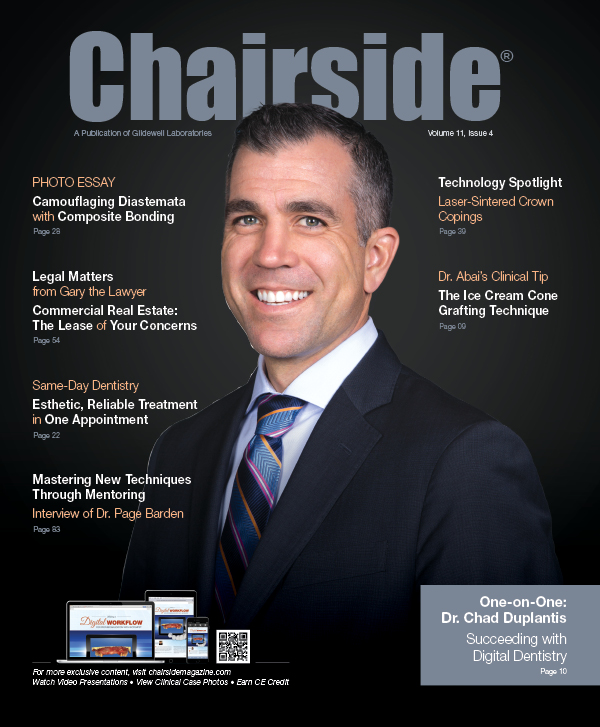Technology Spotlight: Laser-Sintered Crown Copings

The monolithic crown has revolutionized dentistry by harnessing CAD/CAM technology to produce esthetic, highly accurate and exceptionally durable restorations. For the production of porcelain fused to metal crowns, however, traditional crown fabrication methods have persisted. Now, with the advent of laser sintering, the advantages of CAD/CAM can be leveraged for the benefit of doctors who prefer PFMs over monolithic ceramic crowns.
With the advent of laser sintering, the advantages of CAD/CAM can be leveraged for the benefit of doctors who prefer PFMs over monolithic ceramic crowns.
Laser sintering to create metal frameworks is an additive manufacturing process that is analogous to the resin-printing devices that have now become familiar to dentists for printing models. This unique method of creating precisely fitting copings is now being used in the fabrication of Obsidian® Fused to Metal restorations (Glidewell Laboratories; Newport Beach, Calif.). A laser beam is focused onto a tray containing metal powder, which is melted layer by layer until the crown coping designed by the CAD software is produced. This process results in a more accurate restoration and avoids the errors that can occur as a result of material expansion and contraction during the traditional waxing and casting procedures used to create PFM copings.
This process results in a more accurate restoration and avoids the errors that can occur as a result of material expansion and contraction during the traditional waxing and casting procedures.
The Process
From the final impression, a master cast is created and scanned, generating a virtual model of the prepared tooth or implant site. A technician utilizes customized CAD software to design the restoration on the virtual model. Both the coping and the crown pattern are produced in the digital design, as the crown pattern will eventually be 3D printed in wax and used to heat-press Obsidian lithium silicate to the coping. Each individual crown coping design is then selected by the technician, readied for laser sintering, and added to the batch (Figs. 1a, 1b).
A laser beam is focused onto a tray containing metal powder, which is melted layer by layer until the crown coping designed by the CAD software is produced.
The digital data is transferred to the Mlab laser-sintering machine (Concept Laser Inc.; Grapevine, Texas), which is essentially a 3D metal printer (Fig. 2). The technician then selects the transmitted file using the machine software (Fig. 3). The metal powder from which the copings are fabricated is loaded into the tray (Fig. 4). After activating the machine, high-power laser beams strike the powder, fusing together tiny particles of metal. As the laser-sintering process progresses, each metal coping is built up layer by layer, producing an exact replica of the 3D computer-aided design.
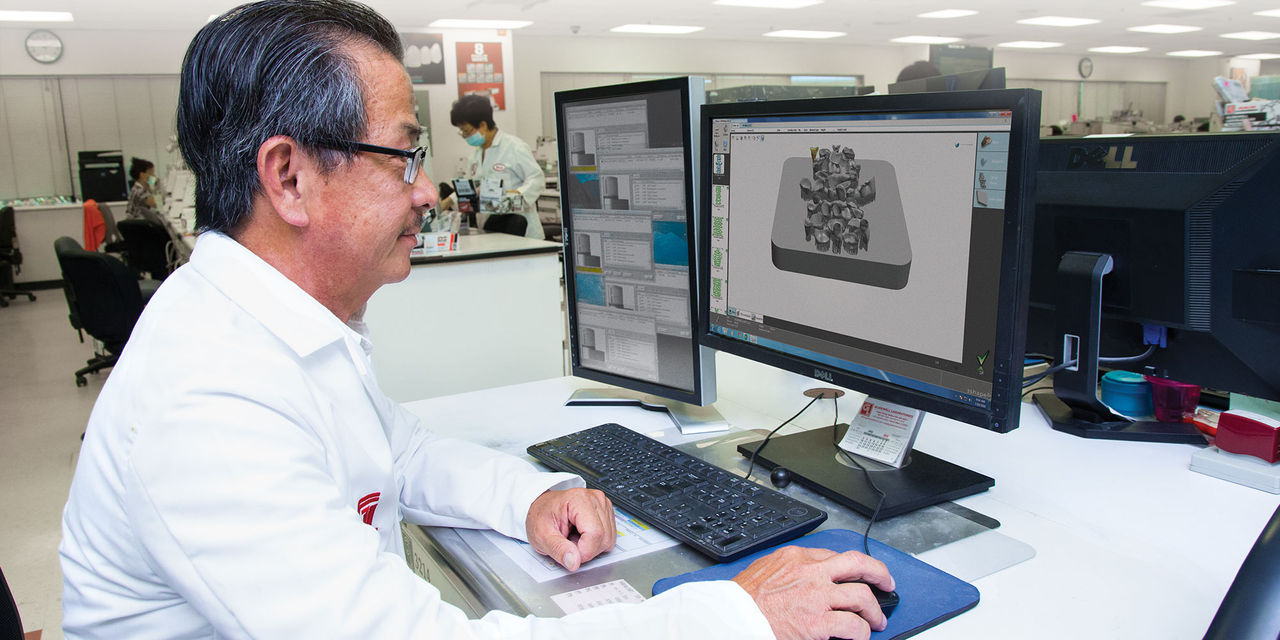 Figure 1a
Figure 1a
 Figure 1a
Figure 1a
Figures 1a, 1b: The lab technician selects and processes the individual framework design, which is combined with numerous other cases for fabrication.

Figure 2: The digital crown coping and framework designs are transferred to the Mlab laser-sintering machine.
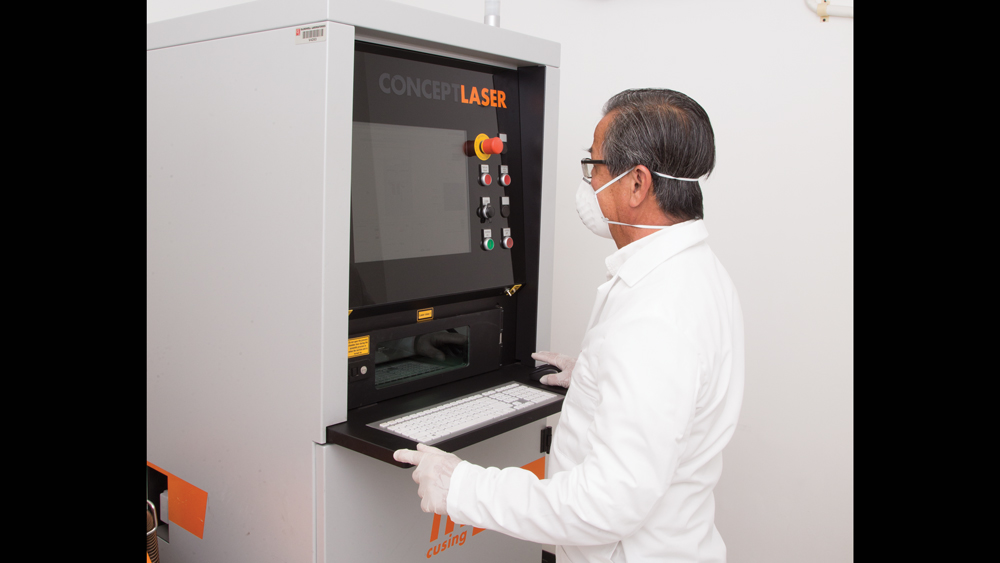
Figure 3: The technician selects the appropriate CAM file and initiates the fabrication process using the computer interface.
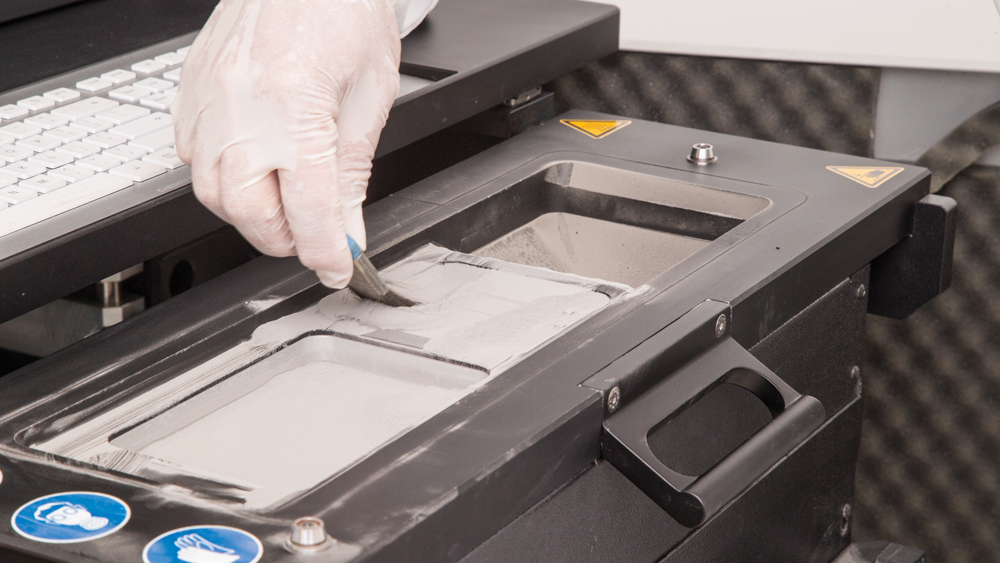
Figure 4: The laser-sintering machine’s tray is filled with metal powder and loaded into the build chamber using the pull-out drawer system.
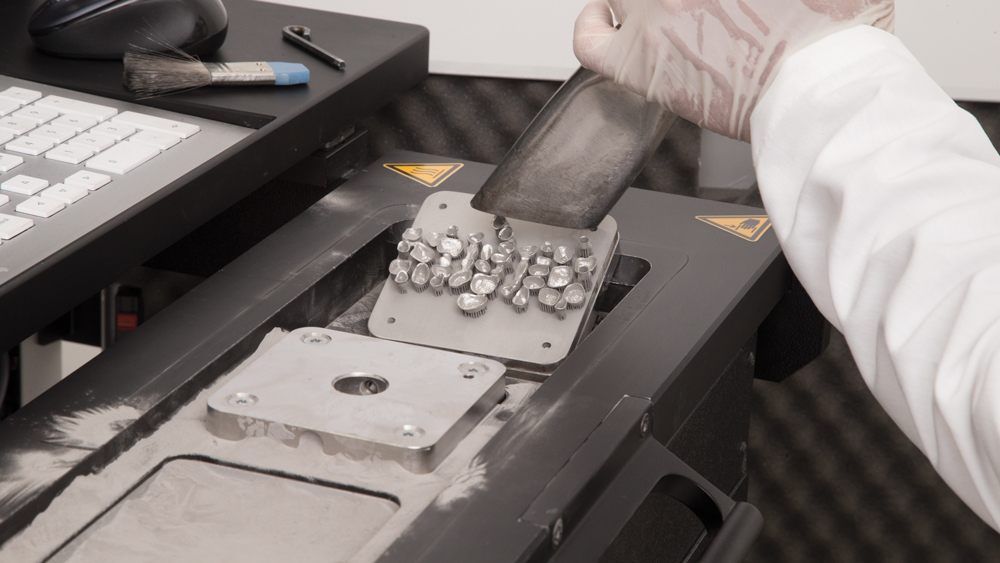
Figure 5: Following completion of laser sintering, the technician transfers the excess powder to the reservoir and removes the metal base plate to which the copings and frameworks are connected.
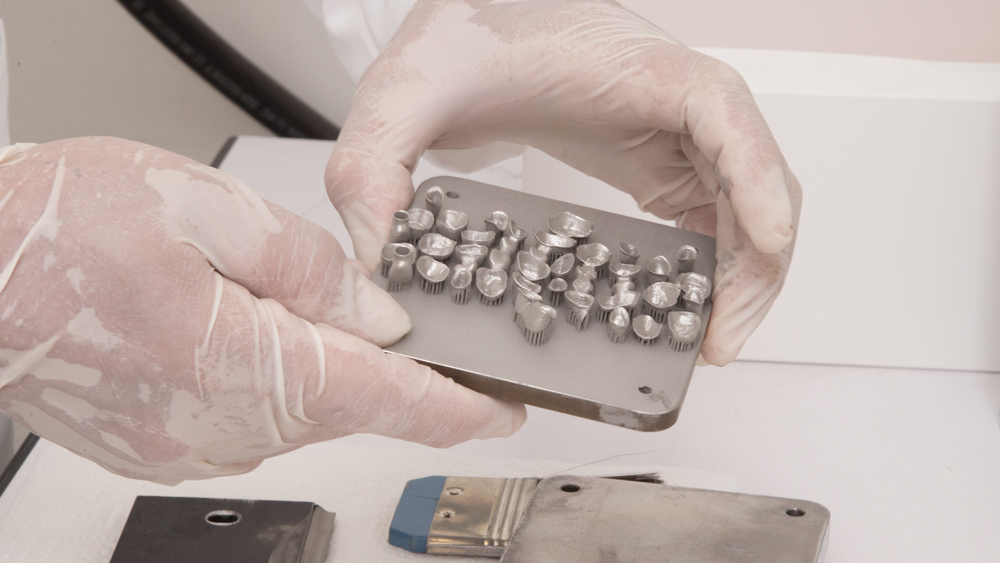 Figure 6a
Figure 6a
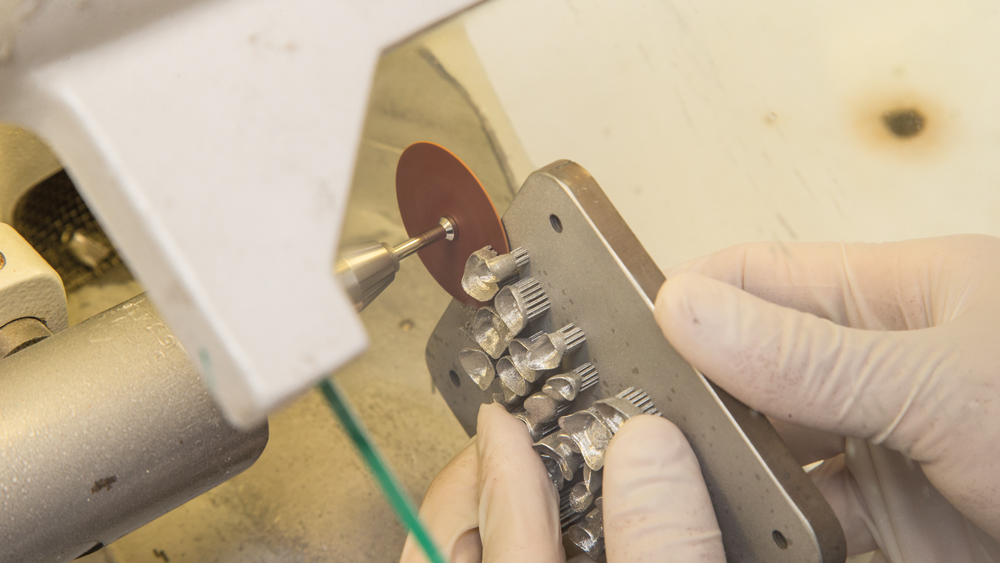 Figure 6b
Figure 6b
Figures 6a, 6b: The technician inspects the crown copings and frameworks and removes the sprues that connect the printed components to the base plate.
Once the laser-sintering process is complete, excess powder is cleared away and the base plate and metal copings are removed from the machine (Fig. 5). The lab technician cuts away the sprues that connect the individual crown copings to the base plate (Figs. 6a, 6b). Then, the metal surfaces of the crown copings are finished and prepared for the heat-press process used to create the final Obsidian Fused to Metal restoration.
Obsidian® Fused to Metal
To create the restoration, an Obsidian lithium silicate ingot is heat-pressed into a digitally fabricated mold and fused to the metal coping. The result is a precisely fitting, esthetic restoration that, due to the durability of Obsidian lithium silicate, is over four times stronger than traditional PFMs (Figs. 7a, 7b). Because of this unique combination of strength and lifelike translucency, Obsidian Fused to Metal is well-suited for both the posterior and anterior regions of the mouth.
 Figure 7a
Figure 7a
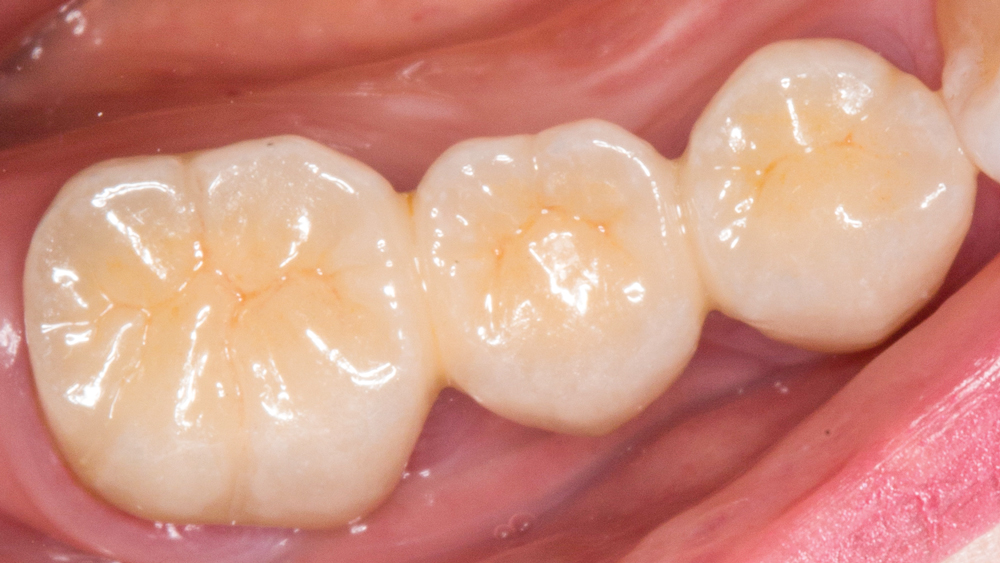 Figure 7b
Figure 7b
Clinical dentistry by Anamaria Muresan, DMD, ME, CDT
Figures 7a, 7b: After heat-pressing Obsidian lithium silicate over the metal framework, characterization can be added if desired. For the case shown, a 3-unit bridge was delivered with a precise fit due to the accuracy of the laser-sintering fabrication process. The new restoration is more lifelike and over four times stronger than this patient’s preexisting PFM bridge, which had fractured on the lingual aspect of tooth #30.
Because of this unique combination of strength and lifelike translucency, Obsidian Pressed to Metal is well-suited for both the posterior and anterior regions of the mouth.

